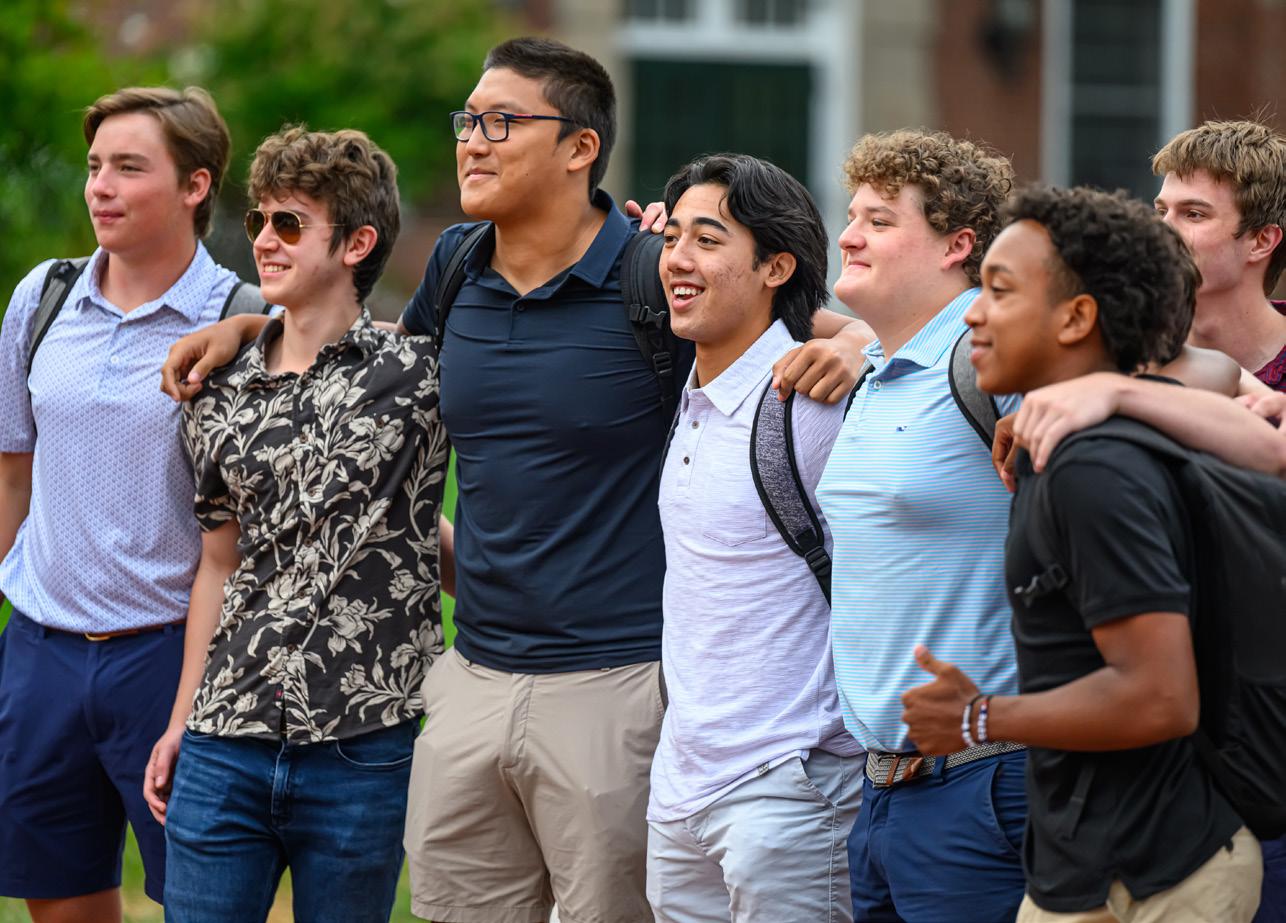
17 minute read
RL News & Hall Highlights
Opening of Roxbury Latin’s 378th Year
“Teachers and scholars of the oldest school in continuous existence in North America, good morning and welcome back,” said Headmaster Kerry Brennan from the Rousmaniere Hall stage on Monday, August 29. That morning, the traditional Opening of Fall Term Hall began The Roxbury Latin School’s 378th academic year, as Mr. Brennan welcomed the 310 students, along with new and returning faculty and staff, to the start of the school year.
Advertisement
Prior to the Headmaster’s opening address, Class I president Tait Oberg read Dr. Maxine Greene’s “Toward Wide-Awakeness” and the entire school sang together lively renditions of America the Beautiful, For the Splendor of Creation, Commemoration Hymn, and The Founder’s Song, with senior Mathias Why accompanying on the organ. Mr. Brennan honored those in our community who are new, or long-serving, or taking on new roles in the school. He honored the members of Class I seated in the front rows, and he welcomed the sixies perched in the balcony.
After the Hall’s closing prayer, and the school community “passed the peace” to those around them, the entire school moved outside under sunny skies. Students, faculty, and staff gathered around the Senior Grass for the traditional opening day all-school handshake, which serves to welcome people new to the RL community—boys and adults—and for all to wish one another a happy and strong start to the academic year. //
Read Headmaster Brennan’s full remarks on page 18.
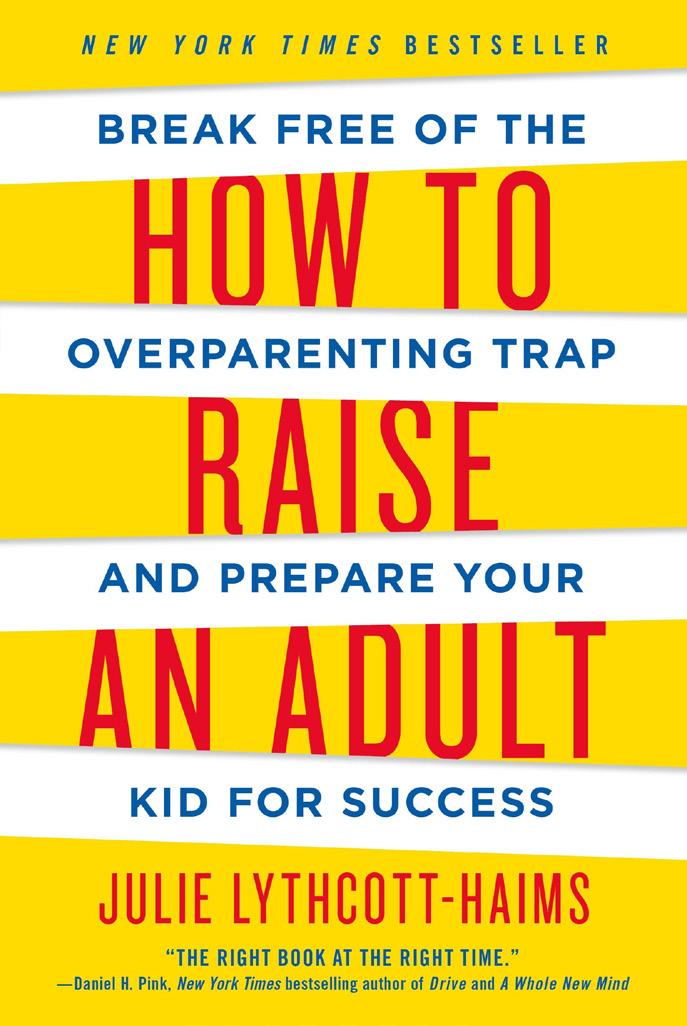
How to Raise—and Become— an Adult: Three Sessions with Julie Lythcott-Haims
“A parent’s job is to put oneself out of a job,” exhorted Julie Lythcott-Haims, who visited Roxbury Latin on August 31. Presenting three sessions over the course of the day—in a workshop with faculty and staff, in Hall with students, and in an evening session with parents in the Smith Theater—Ms. Lythcott-Haims had a consistent message: Young people must develop agency, resilience, and character in order to thrive as adults, and the American trend of overparenting is preventing them from doing so. And the harm that causes is significant.
Ms. Lythcott-Haims is the New York Times bestselling author of How to Raise an Adult, which gave rise to a popular TED Talk that has been viewed millions of times. Her second book is the critically-acclaimed and award-winning prose poetry memoir Real American, which illustrates >>>
her experience as a Black and biracial person in white spaces; and her third book, Your Turn: How to Be an Adult, has been called a “groundbreakingly frank” guide to adulthood.
Ms. Lythcott-Haims served as the Dean of Freshmen and Undergraduate Advising at Stanford University for over a decade, and many of the observations, stories, and insights she writes about—and shared with the RL community—stem from that work, in addition to her experience parenting her own son and daughter.
In sessions with the adults, Ms. Lythcott-Haims described three styles of overparenting that undermine young people’s ability to be, do, give, and feel their best: The overprotective parent—who prevents their children from having to do or deal with hard things, who curates their life experiences for them; the fierce director parent—who dictates what choices (classes, activities, careers) are acceptable and which aren’t; and the concierge parent—who caters to their child’s every logistical and personal need, from managing their schedules to doing their homework. “I saw that more and more students were arriving at Stanford’s campus fragile, brittle, and exhausted,” Ms. Lythcott-Haims described. “They didn’t know how to do any of the things that we have traditionally expected college students to be capable of— from waking themselves up on time for class, to advocating for themselves, to choosing classes, activities and majors that excited them.” She went on to describe how conversations with some of her Stanford students woke her up to these same mistakes she was making in her own parenting, and the negative effects they were having on her children.
In her books—and in her presentations—Ms. Lythcott-Haims offers practical advice about how to break free from the overparenting trap, and how to support young people as they develop the agency to know that their actions have meaning and outcomes; the resilience to know that they can cope and handle hard things when hard things inevitably come their way; and the character to know that other people matter as much as they matter, and to treat others with the kindness and dignity they deserve. //

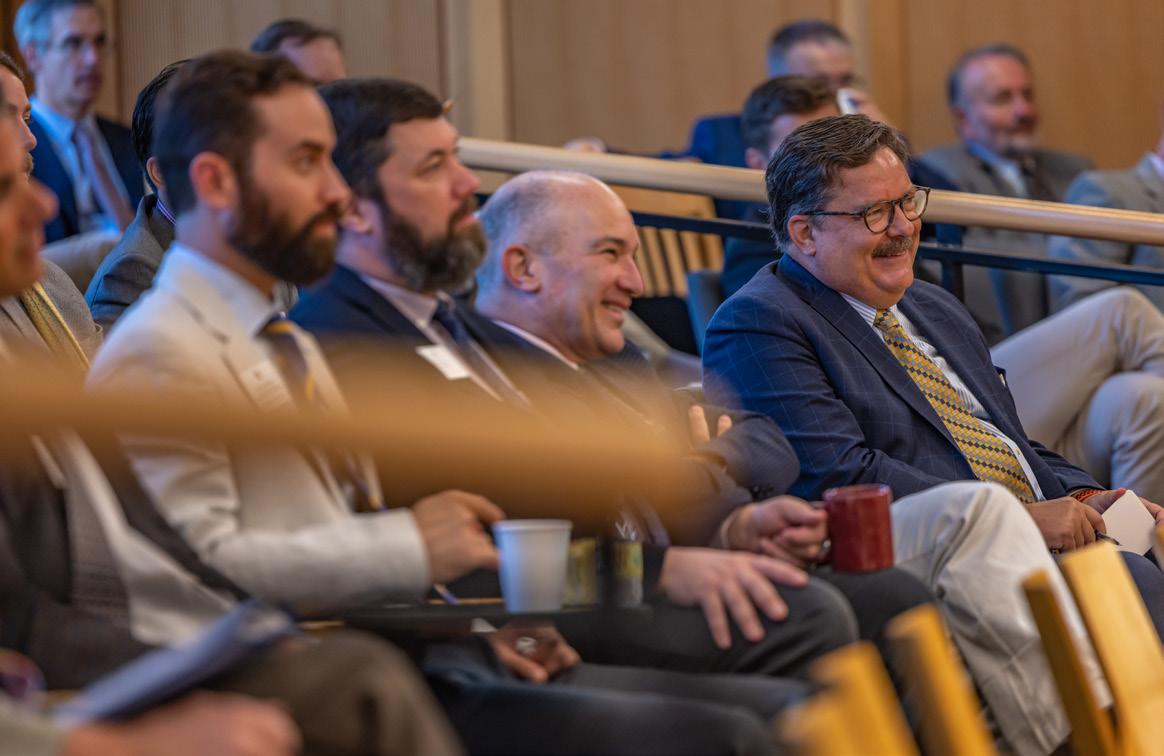
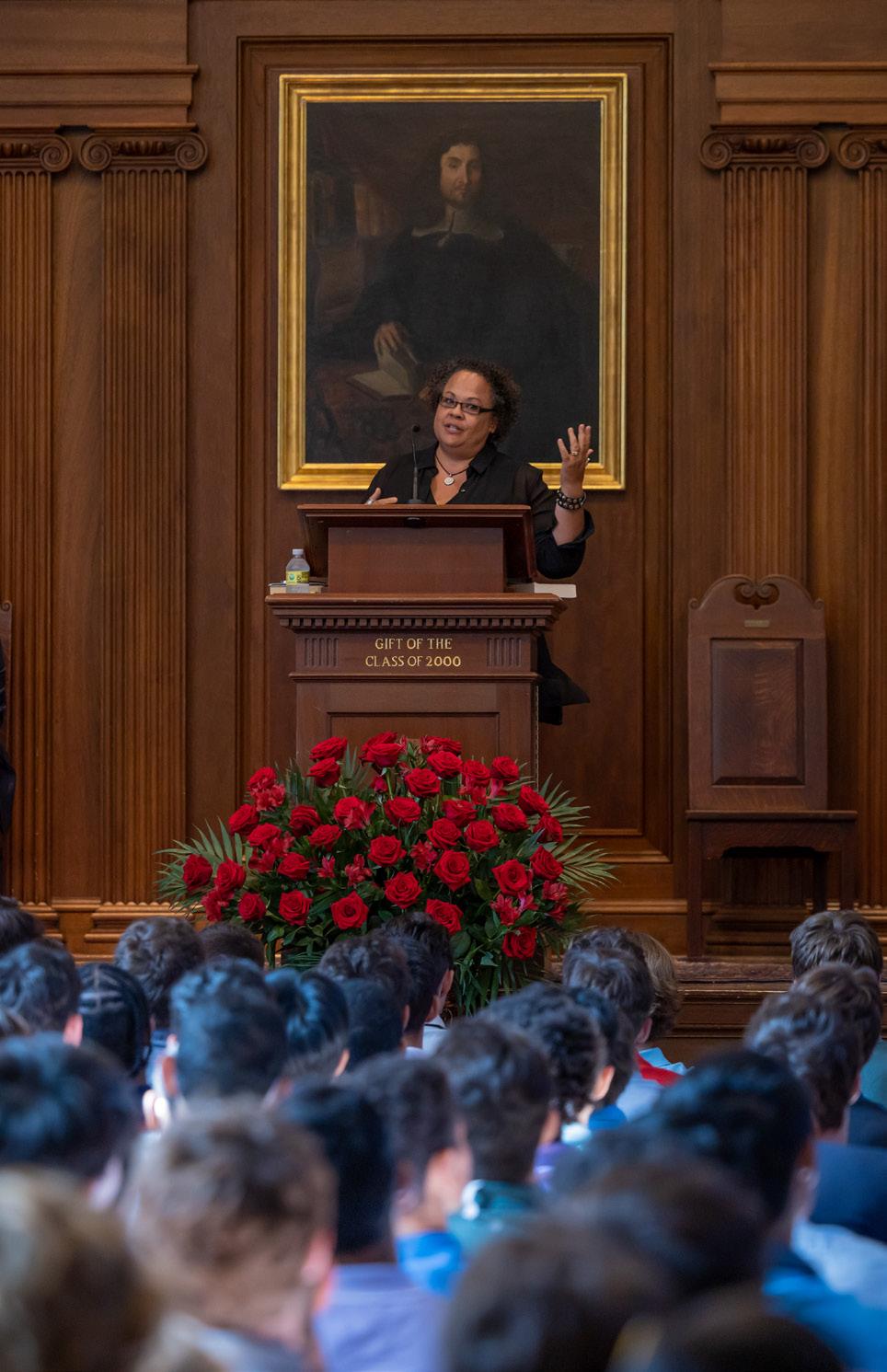
The Beaver Brook Tradition Continues for RL’s Sixies
On September 9, 43 new sixies—along with intrepid Class I leaders and faculty chaperones—trekked to Beaver Brook in Hollis, New Hampshire, for a tradition that dates back nearly sixty years. Upon arriving, Class VI boys were immediately met with their first challenge: a test of their knowledge of “the oldest school in continuous existence in North America.” Charged with successfully separating Roxbury Latin fact from fiction and producing the most correct answers in the questionnaire, sixies face an uphill battle: Those well-versed seniors and teachers may purposefully throw them off track with bogus answers, allowing for the single time all year when our watchwords “honesty is expected in all dealings” go out the window.
The day, organized by Class VI Dean Elizabeth Carroll, continued with team building activities (including a low ropes course, communication and leadership games, and an orienteering challenge that required a crash course in terrain maps and compasses). After dinner, sixies gathered in the barn for the annual viewing of the 1957 film Twelve Angry Men, with small group discussions to follow; these were animated but decidedly more civil than the ones depicted on screen. The evening ended around the fire, where Mr. Opdycke taught new boys The Founder’s Song before it was time for Flip Flop—the famously fun and tricky numbers game—and s’mores. The boys then retreated to their tents for a short night’s sleep after a full and exciting day.
The following morning, after breakfast, each sixie addressed a letter to himself, to be opened at his senior retreat five years from now. As they closed their notebooks, packed up their gear, and boarded the bus home, the Class of 2028 joined a brotherhood of RL men and boys who have sat around the campfire at Beaver Brook, singing about Roundheads and eating s’mores. It is a brotherhood that spans generations. //
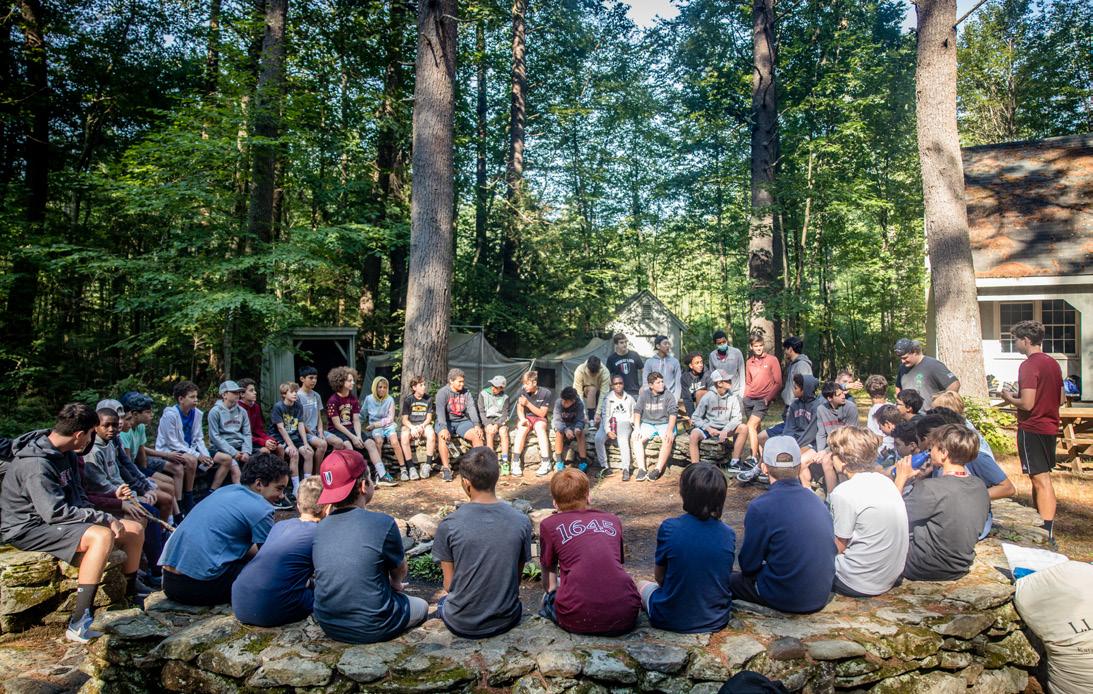
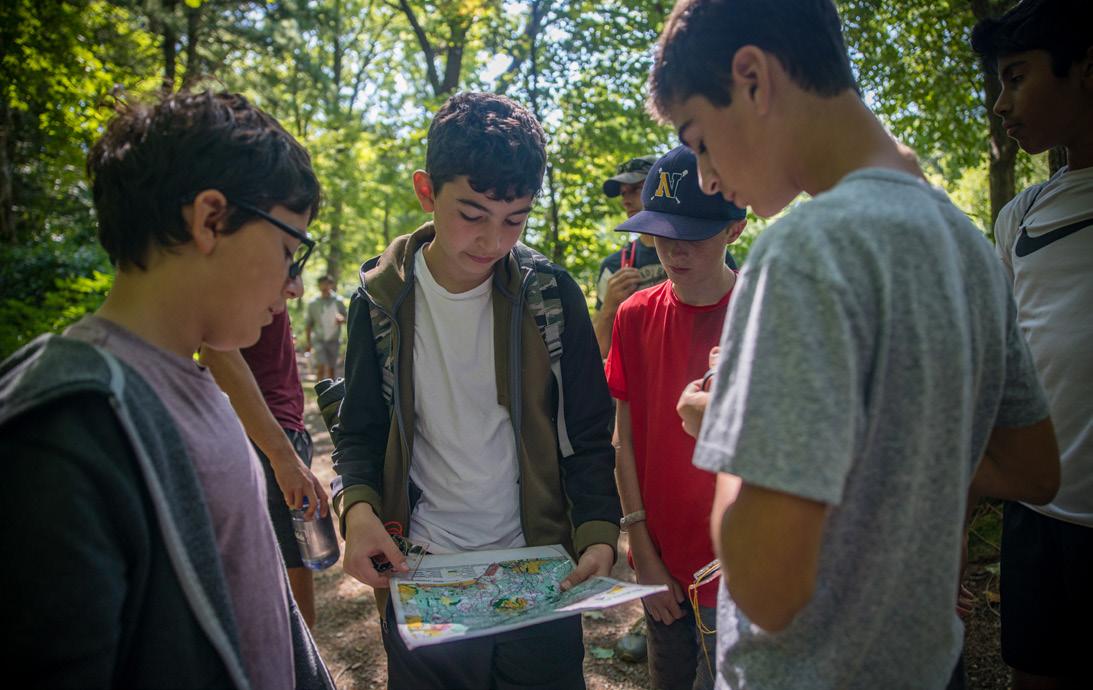

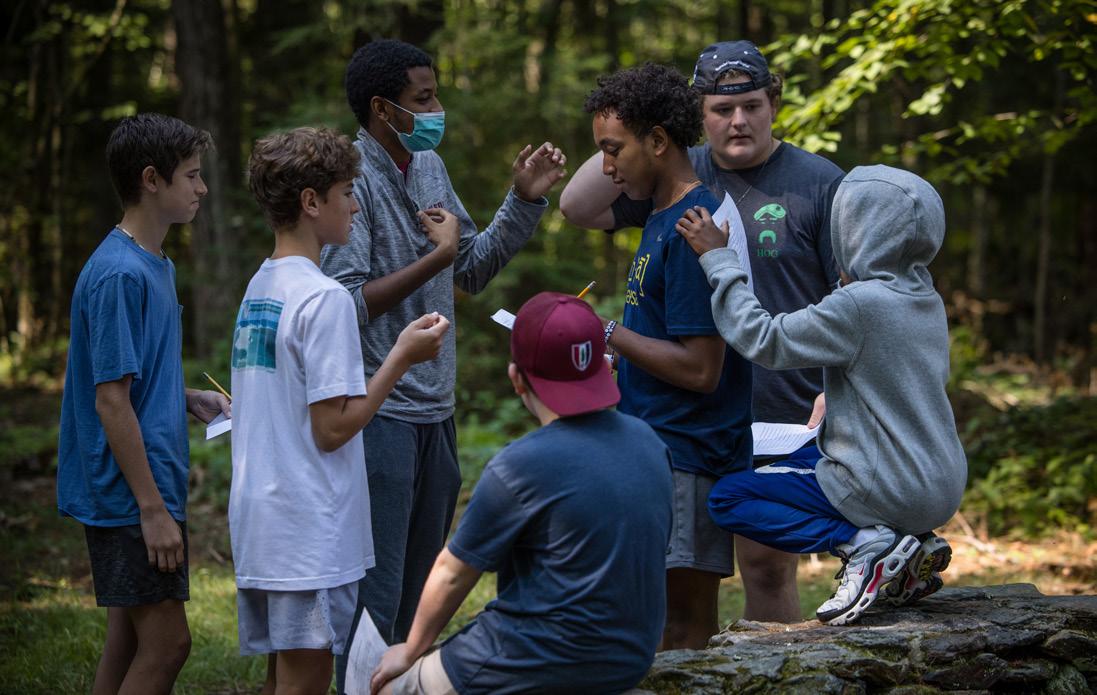
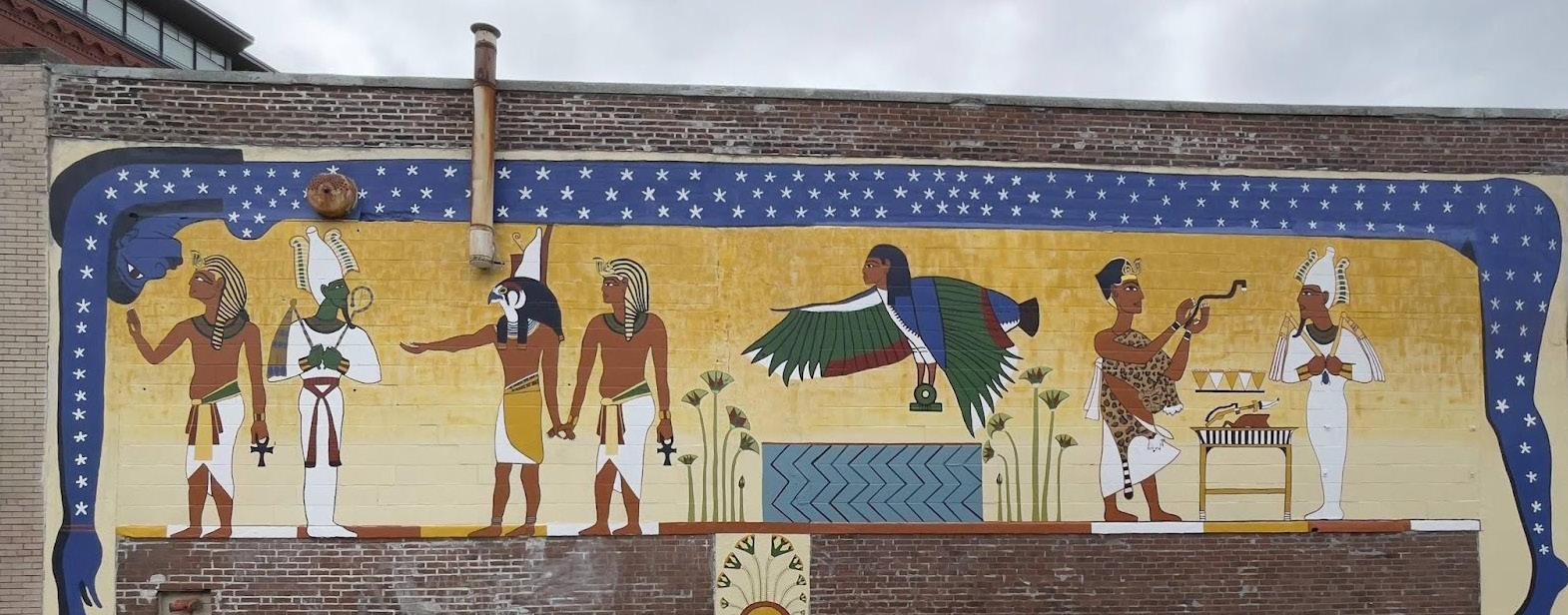
Permanent Boston Mural Designed by Bobby Zabin (I)
For the past two summers, senior Bobby Zabin has worked as part of the Mayor’s Mural Crew—a City of Boston Parks and Recreation program, whose goal is to enhance the style and visual landscape of Boston neighborhoods. This summer, Bobby was commissioned by the program’s leadership to design and execute a large-scale, permanent mural—15 feet tall by 60 feet long—intended to promote National Geographic’s Beyond King Tut immersive exhibit, which ran all summer at the SoWa Power Station on Harrison Avenue. Bobby is the first high school student invited to design a mural for the program in the Crew’s recent history.
Bobby’s charge was to design and lead the execution of a mural in the Ancient Egyptian style that would draw interest in the adjacent King Tut exhibit. Drawing upon his love of art, his knowledge gained from Dr. Sue McCrory’s AP Art History class, and his experience with the Mural Crew, Bobby was up to the task.
“The first thing I did was look at the actual murals in King Tut’s tomb, which are more than 3,000 years old,” Bobby says. “Some of the research took me a while, because the material is not in English.”
“The story that the mural depicts is really similar to the one in King Tut’s actual tomb,” explains Bobby. “It’s essentially him being welcomed into the afterlife by various Ancient Egyptian gods. Once we sketched out the major figures, the majority of the work became filling in the lines."
The realities of painting outdoors all day, on scaffolding, in the hot, summer sun present logistical challenges, but Bobby claimed that the biggest challenge was being in charge.
“I wasn’t really expecting all these people to be asking me what to do—even though I designed the mural! Every minute I was painting, someone would inevitably come up and ask, ‘Bobby, is this the right color?’ or ‘Should this go there?’”
“Stepping back and looking at the completed mural—with everyone looking at it, taking pictures, asking their parents and relatives to come look at it—made me feel really proud, of myself and of everyone who worked on it. It was such a hard thing to do, and we did it.”
Bobby’s mural lives at 471 Harrison Avenue in Boston. The Mayor’s Mural Crew began in 1991 as a summer initiative to cover graffiti with murals painted and designed by high school students from the City of Boston. //
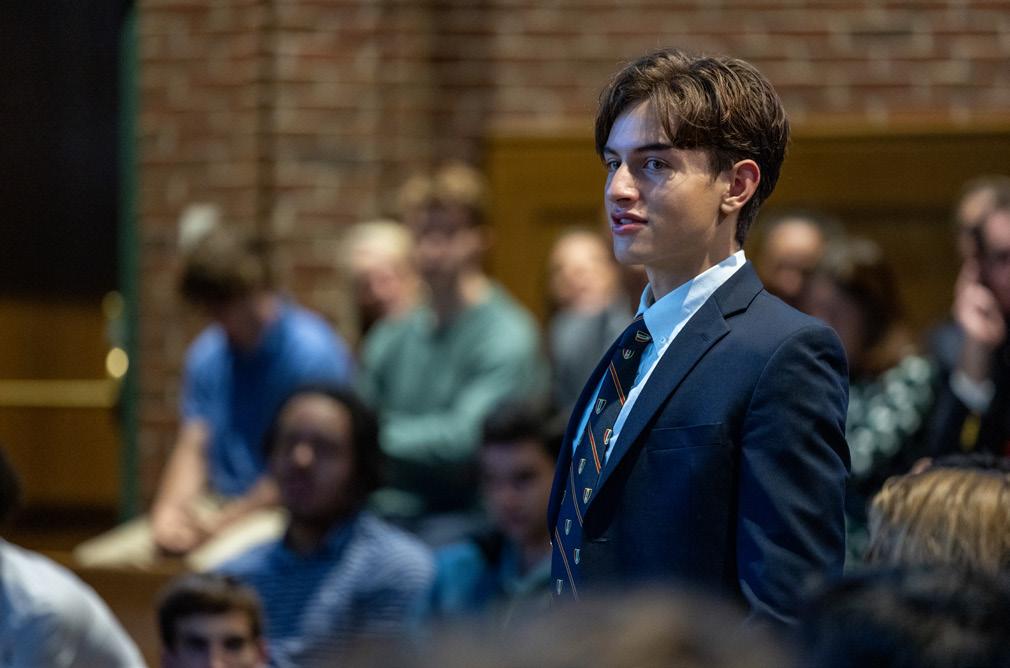

Dr. Peniel Joseph on the Power and Importance of History
On September 30, Dr. Peniel Joseph delivered a memorable Hall, discussing his lifelong work as a historian, author, and activist, focused on race and democracy, justice and equity. “The stories we tell ourselves are important,” Dr. Joseph began, “because they become the way in which we understand ourselves and others, and that becomes the way we act, and our actions shape the reality in which we live.”
Professor of public affairs, ethics, and political values at the University of Texas at Austin, Dr. Joseph teaches courses in social and political policy; is the founding director of the University’s Center for the Study of Race and Democracy; and serves as Associate Dean for Justice, Equity, Diversity, and Inclusion. His career focus has been on “Black Power Studies,” which encompasses interdisciplinary fields such as Africana studies, law and society, women’s and ethnic studies, and political science.
In Hall, Dr. Joseph shared insights from his most recently published book, The Third Reconstruction: America’s Struggle for Racial Justice in the Twenty-First Century. In it, Dr. Joseph claims that this particular moment in American history—from when Barack Obama was elected president, to the rise of the Black Lives Matter movement, to the killing of George Floyd in 2020—is poised to be the third period of Reconstruction in the United States. The first period of Reconstruction—America’s head-on reckoning with racial discrimination and segregation—followed the Civil War in the 1860s and 1870s; the second is said to have been during the Civil Rights Movement of the 1960s. Dr. Joseph shared with students some of the connections he’s drawn across centuries as a historian, and insights he has gleaned from his own journey as a scholar-activist.
“History is our most important teacher and, I would argue, the most important discipline, because it gives context and meaning to all of our other disciplines of study and research,” Dr. Joseph contends. He stressed with students the importance of understanding the full and complete history of the United States, learning the truth about slavery and its lasting legacy of racism in America. He also underscored that history—and the people featured throughout it—are nuanced and complex, that no one person or group of people is entirely heroic or entirely villainous. “History becomes the fuel we use to justify what we want to believe, about ourselves and about our country,” he said, “so we have to work to understand the complete and rounded story.”
In addition to being a frequent commentator on issues of race, democracy, and civil rights, Dr. Joseph is the author of many acclaimed and award-winning books, including The Sword and the Shield: The Revolutionary Lives of Malcolm X and Martin Luther King Jr. (which is currently being made into a television streaming series) and also Stokely: A Life, which has been called the definitive biography of Stokely >>>
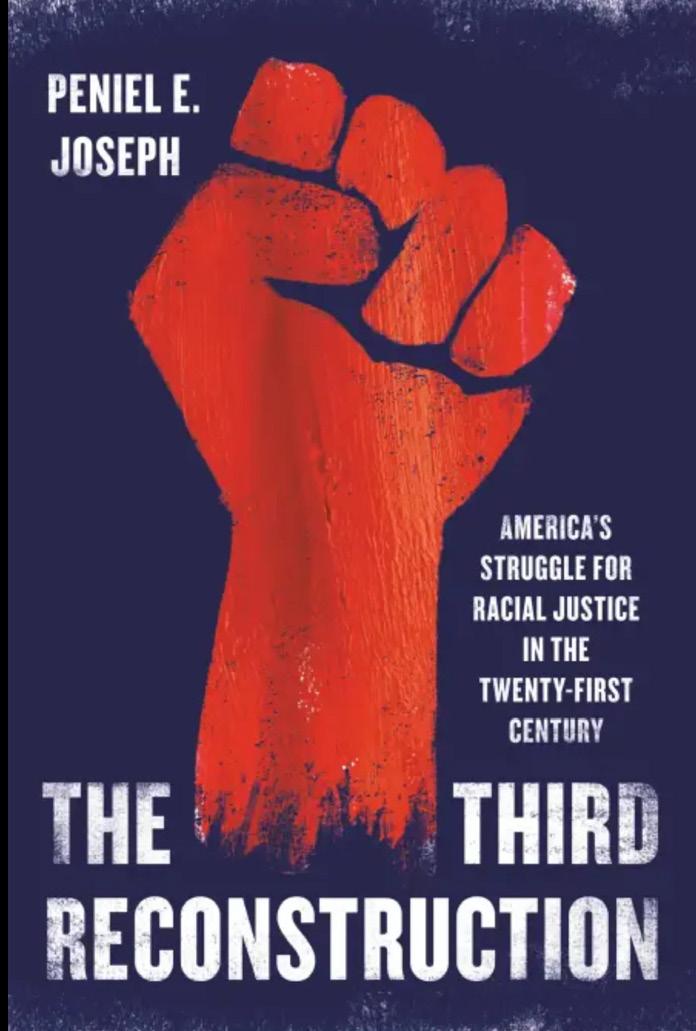
Carmichael, the man who popularized the phrase “Black Power.”
Prior to joining the UT faculty, Dr. Joseph was a professor at Tufts University, where he founded the school’s Center for the Study of Race and Democracy in order to promote engaged research and scholarship focused on the ways issues of race and democracy affect people’s lives. Dr. Joseph earned his bachelor’s degree in Africana studies and history at Stony Brook University, and his PhD in philosophy at Temple University.
After Hall, Dr. Joseph continued the discussion in Mr. Heaton’s U.S. History class, and then met over lunch in an open session with students and faculty who wanted to speak with him further about his work, life, and insights. In Hall he both began and closed with a quotation by W.E.B. Du Bois, about “a land of poignant beauty, streaked with hate and blood and shame,” and, ultimately, he hoped that students and adults would leave with this optimistic takeaway: “We have before us now a precious opportunity to choose love over fear.” //

Twenty-Two RL Boys Recognized in National Merit Scholar Competition
This fall, the National Merit Scholarship Program announced the names of students in the Class of 2023 earning recognition for academic achievement. This year, 22 Roxbury Latin boys have been recognized—10 named National Merit Scholar semifinalists, and 12 others earning commendations. In this 68th annual National Merit Scholarship competition, semifinalists have the opportunity to become finalists and compete for some 7,250 National Merit Scholarships.
Juniors from across the United States entered the 2023 National Merit Scholarship program by taking the 2021 PSAT, which serves as an initial screen of program entrants. The nationwide pool of semifinalists, representing less than one percent of U.S. high school seniors, includes the highest scoring entrants in each state. From the approximately 16,000 semifinalists, about 15,000 are expected to advance to become finalists. Scholarship recipients are selected on the basis of their skills, accomplishments, and potential for academic success at the college level.
Roxbury Latin boys earning recognition this year include semifinalists
John Austin, Arjun Bose, Will Grossman, Akshay Kumar, James McCurley, Alex Nahirny, Tait Oberg, Justin Shaw, Michael
Thomas, and Kevin Wang; and commendation recipients David
Albrechtskirchinger, Ethan Dhadly, Will Hutter, Adam Kuechler, Teddy Lee, Matt O’Connor, Eddy Pan, Marc Quintanar, Tommy
Reichard, Thomas Savage, Evren Uluer, and Luke Wilkinson. //

Mahsa Khanbabai on Immigration, Past and Present
“Every day, all around the world, people are moving,” began Mahsa Khanbabai in Hall on October 4. “They’re making the most difficult decisions of their lives: to leave behind their families, their friends, everything they’ve known, for a better life, or a safer life. Each of them does it for different reasons—maybe for a student visa, or a work visa, for family, or because they’re seeking refuge.”
Ms. Khanbabai, an immigration attorney, was the first speaker in the year’s Hall series on immigration. In Hall, Ms. Khanbabai walked students through the definitions of the terms migrant, refugee, asylum seeker, and parolee. She explained some of the critical issues related to immigration today—the humanitarian, legal, and climate crisis realities that accompany migrants. Ms. Khanbabai also described how Congress’s increasing the numbers of work visas available to immigrants in the United States would help to address the troubling labor shortage of doctors, nurses, farmers, and hospitality and manufacturing professionals that has come into sharper focus since the pandemic.
“The United States has the ability to again be a welcoming country, for people seeking to move here for humanitarian reasons... Our own rich history as a country was built upon the backs of hard-working immigrants, so I hope that you have a chance to explore your own family’s immigration history, and to be a catalyst for positive change in our immigration laws.”
Ms. Khanbabai has been a member of the American Immigration Lawyers Association for more than 20 years, and is a director of the Association’s Board of Governors. She frequently lectures on immigration issues and appears regularly on MSNBC and NPR, and in The Wall Street Journal and The New York Times. Born in Iran and raised in Western Massachusetts, Ms. Khanbabai is a first-generation immigrant whose father was a J-1 physician. // Frederick Law Olmsted, born in 1822, was a preeminent landscape architect, journalist, and social critic. Considered to be the father of landscape architecture, he was also the father of Roxbury Latin alumnus Frederick Law Olmsted Jr., Class of 1890. Olmsted Sr. is famous for co-designing many well-known urban parks throughout the United States and Canada, including Central Park in New York City and the Emerald Necklace here in Boston. His legacy is not just as someone who designed beautiful, natural spaces for the public to enjoy, but also as a visionary who helped shape American progress as it pertains to social and environmental challenges—someone who understood the powerful interplay between thoughtful and sustainable design, democratic spaces, and social justice.
On October 13, two individuals playing key roles in the national bicentennial celebration of the birth of Olmsted—Jen Mergel, Director of Experience and >>>

Celebrating Frederick Law Olmsted’s Bicentennial
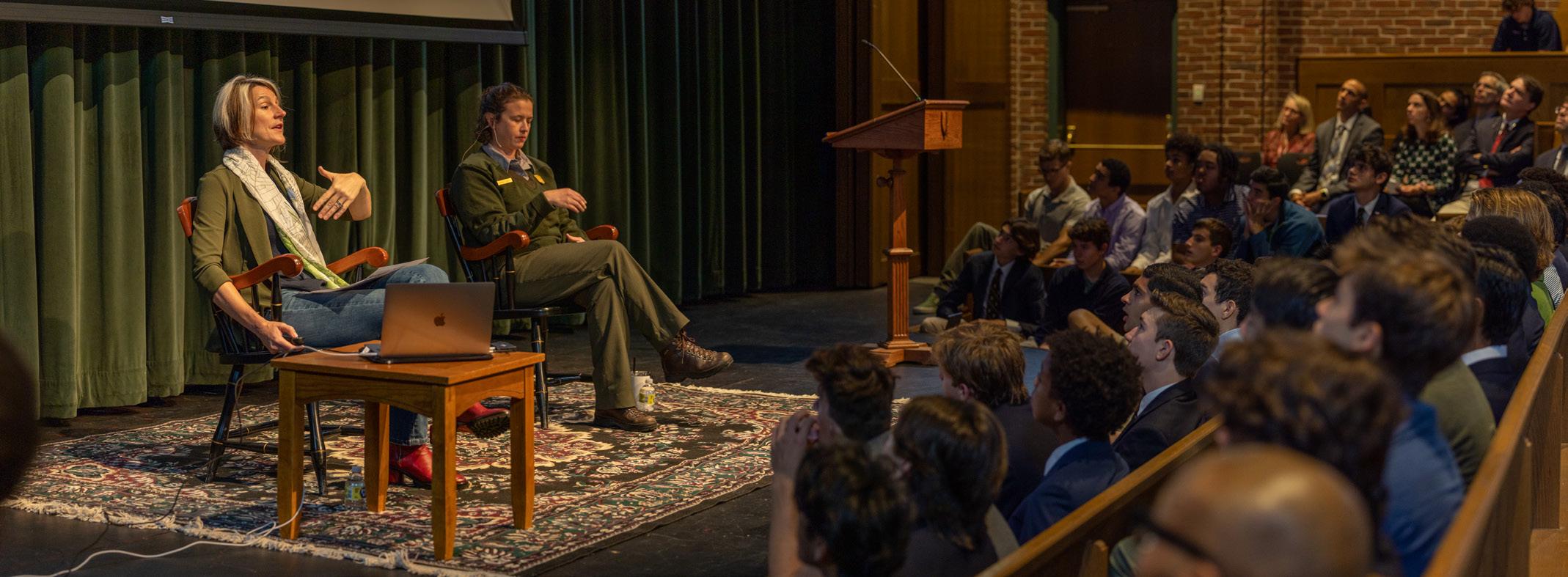
Cultural Partnerships for Boston’s Emerald Necklace Conservancy, and Brianne Cassetta, Supervisory Ranger at Frederick Law Olmsted National Historic Site—joined together to deliver an informative, energizing Hall in the Smith Theater.
“Frederick Law Olmsted was of his time and ahead of his time,” began Ms. Mergel, “launching ideas about open space, health, and truth through the lens of justice that we can still build on today.”
Ms. Mergel and Ms. Cassetta talked about Olmsted’s home and relevance in Boston, during his time and still today. One of his culminating, visionary projects was Boston’s Emerald Necklace— the string of greenspaces that connect neighborhoods across the city. He knew the capacity for Boston to grow outward, and he knew that in order to support that growth, and still maintain the City’s cohesion, he and his contemporaries had to remember that “it is practically certain that the Boston of today is the mere nucleus of the Boston that is to be.”
Ms. Cassetta and Ms. Mergel showed how Olmsted’s work prioritized shared use, shared health, and shared power. They described his founding of national organizations that are part of the fabric of American life today, like the American Red Cross and the National Park Service. They discussed his pivotal piece of writing, The Cotton Kingdom, which chronicled what Olmsted observed, and maligned, related to slavery in the southern United States. They emphasized that, as stewards of those priorities today, we have to work in partnership to support those ideals, seeded by Olmsted, 200 years later. Ms. Mergel and Ms. Cassetta—even in the format of their co-presenting—underscored that the nature of this ongoing work relies on partnerships. Ms. Mergel, for over 20 years, has promoted inclusive engagement with contemporary art in museums, on campuses, and in the public realm, including exhibitions and programs at Boston’s Museum of Fine Arts, Institute of Contemporary Art, and, today, with Olmsted Now. Boston-born and based, Ms. Mergel aims to initiate, innovate, and collaborate on projects that foster curiosity, connection, and equity through the intersection of the arts with a wide range of disciplines.
In her role as a federal ranger of the National Park Service, Ms. Cassetta helps to protect and preserve areas of the National Park system, which includes making public lands inviting, inspiring, safe, and accessible. Her role also includes conducting educational programs for visitors of all ages and backgrounds about historical, natural, or scientific treasures protected by the U.S. Department of the Interior.
Olmsted 200 is the year-long celebration of the bicentennial of Olmsted’s birth, as well as a multi-faceted exploration of his living legacy. We were grateful to have had with us two individuals who have been integral parts of the Olmsted 200 celebration, and who shared insight about Olmsted’s work—during his own time, and how it continues to resonate in important ways, including in the City of Boston, 200 years later.
“Olmsted reflected a powerful concern for ensuring our natural life supported and enhanced our quality of life,” concluded Headmaster Brennan in the morning’s Hall. “And like the air we breathe, everyone, regardless of his or her social standing or economic status, should have equal access to spaces and places that delighted, restored, and inspired them.” //








